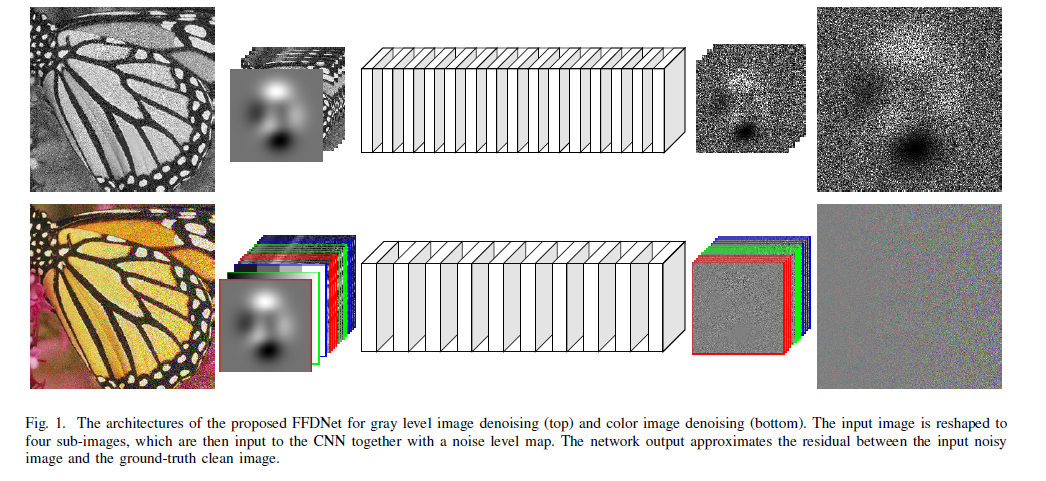(TIP 2018)Technology details of FFDNet
前言
论文地址:见researchgate, 方法继续更新。
解决的问题:
1.discriminative learning methods 用于denoising 任务学习到的是一个对于每种
噪声水平的具体模型,需要不同的噪声水平,灵活性差,不能用于实际。
提出了FFDNet的优势
1.downsampled sub-images to speed up the inference
2.采用正交正则化(orthogonal regularization) to enhance the generalization ability
3.有较宽的噪声处理能力
4.能够移除 spatial variant noise 依靠将这种噪声简化为 一个非均匀的噪声水平映射
5.速度快
前提
1.假设是噪声是additive white Gaussian noise AWGN,噪声的水平被给与。
2.当噪声未知和难以估计能够达到noise reduction 和 details preservation的平衡
3. 可以处理空间变异噪声spatial variant noise
文献综述:
1.当前的方法时间耗费大,不能移除spatially variant noise
2.当前的CNN-based 的方法受限于flexibility and 对于具体的噪声水平定制
3.还有诸如在真实噪声图片中表现不好的drawbacks
具体方法细节:
1. 从
$x = f(y,\theta_{\sigma}) =====》 x = f(y,m;\theta)$
where 在之前的思路 $\theta$是随着噪声的水平$\sigma$的变化而变化; 现在的思路是
$m$ is a noise level map,将噪声水平图建模为输入,模型参数不受噪声水平的影响。
2.比较有意思的就是$m$ noise level map.
3. 为了提高泛化性,impose an 正交正则化 on convolutional filters(提高了FFDNet对输入噪声与地面真实噪声水平不匹配的鲁棒性。); BN 和 residual learning
;downsample the sub-image 加快速度。
FFDNet 的具体技术点






 浙公网安备 33010602011771号
浙公网安备 33010602011771号